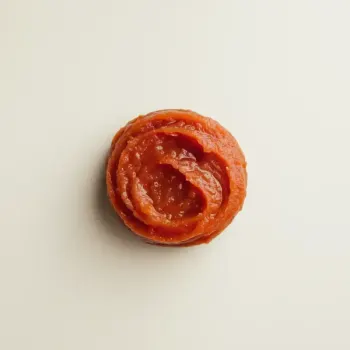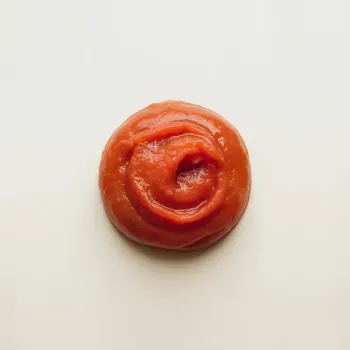Tomato Paste and Tomato Puree are both derived from tomatoes, with paste being a thick, concentrated form used to enhance flavor and texture in dishes, and puree being a thinner, less intense base for sauces and soups.

Tomato paste is a concentrated form of tomatoes that have been cooked down, with the seeds and skins removed. It has a deep, rich flavor and is often used to add body and enhance the taste of sauces and stews.

Tomato puree is made from tomatoes that have been cooked and strained, resulting in a thick liquid. It's less concentrated than tomato paste and is typically used as a base for sauces and soups to provide a smooth tomato flavor.
Tomato paste is thicker, more concentrated, and has a more intense flavor than tomato puree. The puree is thinner, less intense, and is often used to create a consistent tomato base, while paste is used to add a burst of tomato flavor and color.

Your ultimate Recipe Box, Meal Planner, and Cooking Class all in one
In Italian sauces like marinara or Bolognese, tomato paste is used to deepen the flavor profile. It's often 'bloomed' in oil to release its flavors before other ingredients are added. Tomato puree provides the base for many Italian sauces, giving them a smooth texture and fresh tomato taste without overpowering the other ingredients.
A small spoonful of tomato paste can be added to soups and stews to intensify the tomato essence and add color, particularly in heartier recipes like beef stew. Tomato puree is excellent in lighter soups and stews where a more subtle tomato flavor is desired, or when the dish benefits from a smoother, more liquid tomato component.
Tomato paste can be rubbed onto meats as part of a marinade or glaze to impart a rich tomato flavor, especially in dishes like meatloaf or grilled chicken. Tomato puree can be used as a cooking liquid for braising meats, adding both moisture and a mild tomato taste to the dish, such as in pot roasts or pork chops.
Both tomato paste and tomato puree are low in calories and high in lycopene, an antioxidant.
| Nutrient | Tomato Paste ( per 100g ) | Tomato Puree ( per 100g ) |
|---|---|---|
| Fat | 0.5g | 0.21g |
| Sodium | 47mg | 24mg |
| Protein | 4.3g | 1.65g |
| Calories | 82 | 38 |
| Carbohydrates | 18.9g | 8.98g |
| Dietary Fiber | 4.1g | 1.9g |
Yes, but it should be diluted with water to match the consistency and reduce the intensity of the flavor.
Both are healthy options, but tomato puree has a lower concentration of sodium and calories per volume.
Tomato paste offers a more concentrated flavor, which is desired in some recipes to enhance the overall taste without adding too much liquid.
Approximately 18 oz of tomato puree can substitute for 6 oz of tomato paste, considering you adjust for the concentration difference by tripling the volume.
Yes, by simmering tomato puree until it reduces and thickens to the desired consistency.